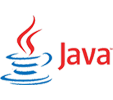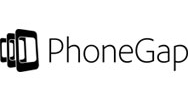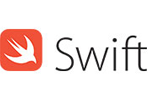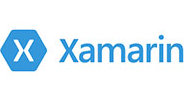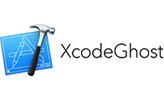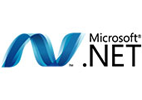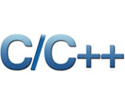Market forces pushing U.S. companies toward global teams
Several structural forces are nudging product and engineering leaders to rethink how they staff development work. Wage inflation for engineers in the U.S., intense competition for senior talent, pressure to shorten time-to-market, and the need for specialized expertise (AI, ML, real-time systems, payments) have made a purely onshore delivery model costly and fragile.
Global collaboration lets U.S. firms keep product, design and go-to-market functions close while outsourcing execution or scaling capabilities through partners — for example a trusted mobile app development company in India — that can ramp quickly and offer deep technical expertise at competitive rates.
What “global collaboration” actually looks like

Global collaboration is more than offshoring. It’s a hybrid model combining:
- U.S.-based product leadership (PMs, UX, customer success)
- Distributed engineering squads (onshore + offshore)
- Shared tools and processes (agile sprints, CI/CD, automated tests)
- Clear governance, IP protection, and data compliance
When executed well, that model delivers the speed and quality of a larger, more experienced organization without dramatically increasing fixed overhead.
Key benefits companies see
- Faster iteration cycles: development work can proceed around the clock.
- Cost efficiency: access to lower hourly rates while retaining high quality.
- Specialist skills: niche capabilities (native performance, ML pipelines, AR) on demand.
- Scalability: ability to expand engineering capacity quickly for launches or growth phases.
Hidden advantages beyond cost

Cost savings are only the most visible benefit. There are several strategic gains that are often overlooked:
1. Continuous delivery through time zone leverage
With teams spread across time zones, U.S. product teams can hand off well-defined tickets at the end of the day and receive progress the next morning. This "follow-the-sun" approach shortens cycle time for bug fixes and small feature work and keeps momentum high between releases.
Operational tips
- Document acceptance criteria and use recorded demos for handoffs.
- Automate tests so overnight commits are validated immediately.
2. Improved risk management
Reputable vendors accept contractual SLAs, run proven processes, and often provide backups for resource continuity. This shifts part of execution risk away from early-stage teams that need predictable outcomes.
3. Access to a broader talent bench
A quality app development company in India typically has hundreds of engineers across specializations. That means instead of spending months recruiting, U.S. teams can tap experienced resources for short ramps or for very specific problems (e.g., realtime networking, advanced analytics).
4. Faster experimentation at lower cost
Global collaboration enables running parallel experiments — A/B tests, alternate onboarding flows, and feature branches — without burning core team cycles. More experimentation means faster learning and better product-market fit.
Cost comparison — U.S. vs India (indicative)
These rates are ballpark figures to help budgeting. Actual rates vary by experience level, city, and contract model.
| Role | Typical U.S. Rate (USD/hour) | Typical India Rate (USD/hour) | Approx. Savings |
|---|---|---|---|
| Mid-level Mobile Developer | $80 – $120 | $20 – $40 | ~60–75% |
| Senior Engineer / Architect | $120 – $180 | $35 – $70 | ~60% |
| UI/UX Designer | $60 – $110 | $20 – $45 | ~50–65% |
| QA / Test Automation | $50 – $90 | $15 – $35 | ~55–70% |
Time zone table & collaboration windows (U.S. — India)
| U.S. Region | Time Zone | Typical Work Hours | Overlap with India (IST) |
|---|---|---|---|
| West Coast (San Francisco) | PDT (UTC -7 / -8) | 9:00 AM – 5:00 PM | Evening overlap (~8:30 PM – 11:00 PM IST) — good for async handoffs, limited live overlap |
| Central (Chicago) | CDT (UTC -5 / -6) | 9:00 AM – 5:00 PM | Night overlap (~10:30 PM – 1:00 AM IST) — workable for well-documented handoffs |
| East Coast (New York) | EDT (UTC -4 / -5) | 9:00 AM – 5:00 PM | Morning overlap (~8:30 AM – 12:00 PM IST) — ideal for daily syncs and live reviews |
Collaboration models — choose what fits your company

Dedicated team
A dedicated offshore squad is assigned to your product and works as an integrated extension of your in-house team. Best for long-term roadmaps and continuous feature delivery.
Fixed-price project
Suitable for clearly defined scopes like an MVP or a specific integration. There’s budget predictability, but less flexibility for scope changes.
Time & Material
Flexible and agile. You pay for actual effort and can re-prioritize work as user feedback arrives.
Best practices for successful global collaboration
- Prioritize clear documentation: user stories, acceptance criteria, and API contracts remove ambiguity.
- Establish a single product owner: one voice for prioritization avoids conflicting requests.
- Use automated CI/CD: reduce manual steps and enable safe overnight deliveries.
- Run short pilots: 4–8 week paid pilots validate fit before larger commitments.
- Protect IP & data: NDAs, DPAs, and well-defined IP transfer clauses are essential.
- Insist on metrics: track velocity, defect density, uptime, and user behavior to ensure value.
Common pitfalls and how to avoid them
Pitfall: Choosing purely on price
The cheapest vendor often creates hidden costs via rework and poor UX. Instead, evaluate portfolios, references, and technical tests.
Pitfall: Vague requirements
Poor specs lead to scope creep. Use clear user stories, wireframes, and acceptance tests tied to payments/milestones.
Pitfall: Weak governance
Lack of regular demos, retrospectives, and backlog grooming leads to misaligned priorities. Maintain a steady cadence of sprint reviews and business reviews.
Industry examples — where global collaboration shines
- FinTech: secure payments, KYC flows and fraud detection — specialist security and compliance expertise available offshore.
- HealthTech: telemedicine and HIPAA-aware integrations — offshore teams provide backend and devops scale while clinics keep patient-facing governance local.
- E-commerce: high-performance mobile carts and personalization engines built using global teams and cloud infrastructure.
- Consumer apps: rapid A/B testing and growth experiments executed in parallel by distributed squads.
How to evaluate a potential global partner
Checklist
- Proven case studies in your industry and region
- References from clients with similar scale and compliance needs
- Transparent delivery model, SLAs and pricing
- Strong security posture (SOC/ISO certifications if possible)
- Clear communication plan and a suggested overlap schedule
Conclusion — a strategic shift, not just a tactical hack
Global collaboration is rapidly becoming a strategic norm for mobile app development in the U.S. It enables faster delivery, broader access to talent, and smarter use of capital when partnered with reputable vendors — for example, an app development company in India that has proven delivery and regional experience. The companies that adopt hybrid, governance-driven collaboration will be best positioned to innovate quickly and sustainably in the years ahead.


